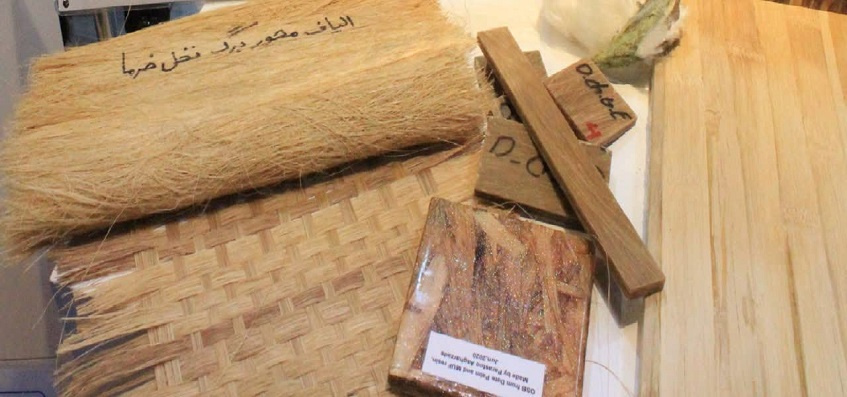The product of Green Research, Advanced composite was produced from palm tree remains

According to the Public Relations report of University of Tehran , Dr. Hamid Zare Hosseinabadi, a member of the Department of Science and Wood and Paper Industries of the College of Agriculture and Natural Resources of University of Tehran, has focused on the use of tree pruning residues in the manufacture of lignocellulosic composites in his recent research.
A biocomposite layer of long palm fibers and Calotropis procera silk and a sustainable chip composite of date palm residues are among the products that have recently been made by this school member of University of Tehran in the field of lignocellulosic composites.
Dr. Hamid Zare says: Considering the existence of 250,000 hectares of palm cultivation in our country, the amount of residues from the annual pruning of palm trees is such that it can be used industrially on a large scale. On the other hand, the limitation of forest cover in our country makes it necessary to use plant residues to make lignocellulosic composites.
According to the associate professor of University of Tehran, the composite made with the axis of the date palm tree has a resistance equal to or higher than common wooden composites. Also, the long fibers extracted from the leaves of palm trees show more mechanical resistance than glass fibers in strengthening polymer composites.
Dr. Zare pointed out: in the preparation of this type of resistant composite, in addition to the long axis fibers of the date palm tree, the silk of the Calotropis procera plant is also used. Calotropis procera plant is one of the drought-resistant plants that grows in the south and southeast of Iran and can be propagated by cuttings.
Innovation in the use of indigenous natural capabilities that adapts industrial development to ecosystem conditions is the main topic of current research in the School of Natural Resources of University of Tehran.

Your Comment :